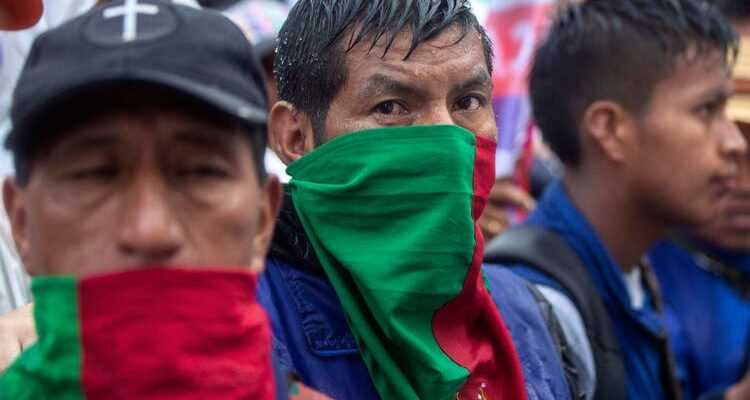Presidential elections will take place in Colombia on Sunday. The city of Cali shows what can happen when people’s hopes for a political change are disappointed.
Members of the indigenous organization Consejo Regional Indígena del Cauca (CRIC) at the final rally of left-wing presidential candidate Gustavo Petro in Cali.
Maybe it’s because Carolina Vélez is a historian. If you walk through Cali with her, the metropolis with three million inhabitants looks like walking on a historical battlefield. But the young woman only tells vividly what happened here in the south of the city exactly a year ago. As here, in the wide streets and spacious green belts, it was mainly students and their parents who demonstrated against the government at the beginning. It was largely peaceful. But how more and more militants had been added over the weeks. Then metro stations, supermarkets and gas stations were torched.
Indigenous organizations with their own armed protection troops have entrenched themselves on the university campus. The military used the nearby shopping center as a base, but was hardly deployed. The dreaded Esmad, i.e. the task force against demos, which reports to the Ministry of Defence, struck mainly at night.
The bloody climax was exactly a year ago
On May 29, exactly a year ago, the clashes came to a bloody climax: from the Ciudad Jardin district, armed civilians, a kind of vigilante group, attacked the demonstrators with the acquiescence of the police. It was shot. “We could only run away, it wasn’t a warning shot in the air,” says Vélez, who also works as a journalist for alternative media and, like many young media workers in Colombia, also sees herself as an activist.
Colombian President Iván Duque arrived at the time and stoically declared that he had tripled the number of security forces. The result: 13 dead in one night, as independent media were later able to prove. There were at least 45 in Cali alone throughout the riots. “29M”, i.e. May 29th, has been in the annals of Cali ever since.

According to unofficial figures, at least 45 people died in the riots in Cali a year ago.
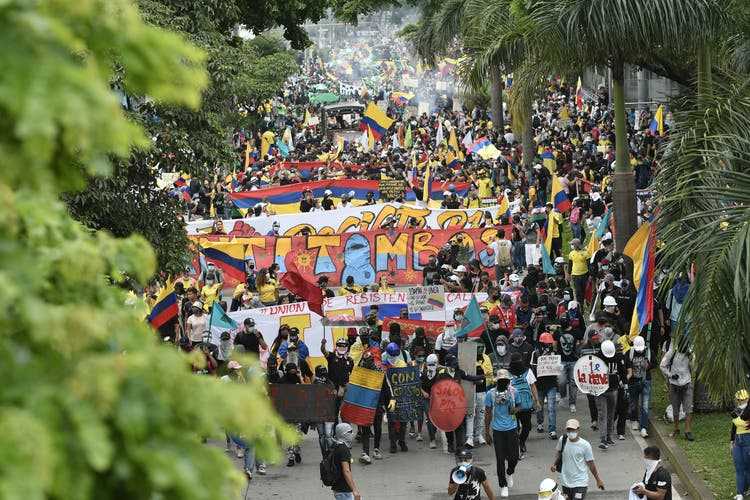
The demonstrations in Cali have become more violent by the week since they began in April 2021. Clashes with armed civilians increased, especially at night.
These were the most violent protests in Colombia in decades. Because left-wing protests or those critical of the government have not been tolerated in the conservatively governed country for more than fifty years and have been equated with the guerrilla. The military and the police were responsible for demonstrators. The historian Vélez sees “29M” as another date in her country’s violent tradition. “Most Colombians still don’t want to accept their violent history,” she says.
This tradition also characterizes the campaign for the presidential election next Sunday. Left-wing candidate Gustavo Petro leads in the polls ahead of two conservative opponents. The 62-year-old former guerrilla, mayor of Bogotá and senator is performing under extreme security. At every public campaign event, he is protected from gunfire by bodyguards with protective shields. An ambulance with blood reserves accompanies him permanently. He recently canceled events in the coffee region near Cali because his security staff is said to have received concrete information about assassination plans by a paramilitary group.
Cali is like a political test lab for Colombia
For Luis Jaime Perea Ramos, conflict researcher, lawyer and Afro-Colombian activist, Cali is like a political test laboratory for the elections. One can recognize tendencies for the whole of Colombia early on, because all of the country’s problems intensify in the city as if under a magnifying glass. In fact, the city of Cali shows what can happen when hopes for a political change are disappointed.
A tense calm prevails in Cali that could explode at any moment, says a former local government official in charge of security. Cali is the country’s most difficult city to pacify – and the only metropolis in Colombia where white, black and indigenous people are strongly represented. Since the days of the infamous Cali drug cartel in the 1980s, the city has been on the corridor of drug trafficking from the Andes to the Pacific. Indigenous peoples from the interior of the country and Afro-Colombians from the Pacific region, fleeing the violence of drug gangs, have been coming there for decades.
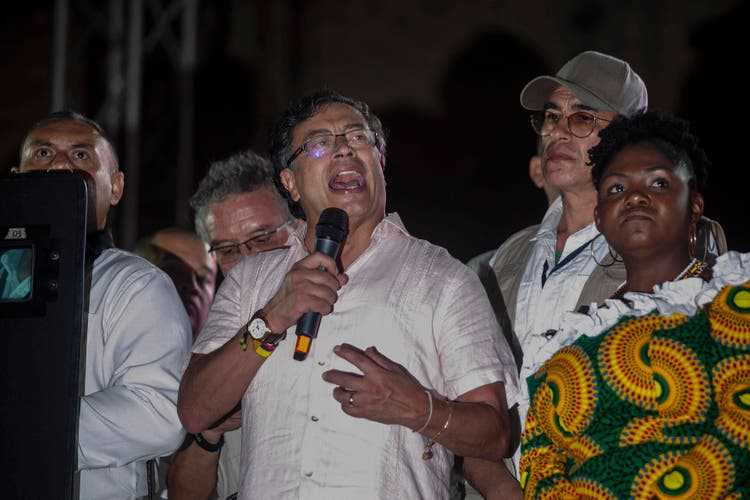
Closing event of the election campaign in Cali by Gustavo Petro and his vice-presidential candidate, Francia Márquez.
The Green and former center-left senator Jorge Iván Ospina Gómez has been the mayor there since 2020. According to Professor Perea Ramos, people had hopes for political change after the conservative predecessor in office. But immediately after the first protests, the mayor acted like a traditional conservative leader. The anger of the people was correspondingly great.
The parallels between Ospina and Petro, who is six years older than him, are striking: Ospina’s father was the founder of the guerrilla M-19, to which Petro later belonged. This organization, known for carrying out a violent attack on the Palace of Justice in Bogotá and stealing Bolivar’s sword from the museum, gave up armed struggle in 1990 and became a political party – much like the FARC guerrillas did five years ago the peace agreement. Petro later became a senator and mayor of the capital, Bogotá. Four years ago he narrowly lost to the now unpopular conservative President Iván Duque.
Petro represents a traditionally leftist program calling for a strong state, a protected national economy and land reform. What is new is that he emphasizes the environmental aspect: he does not want to issue new oil licenses, limit mining and restructure the energy sector. His vice-candidate is Francia Márquez. She is the first Afro-Colombian to hold the second-highest office in the republic.
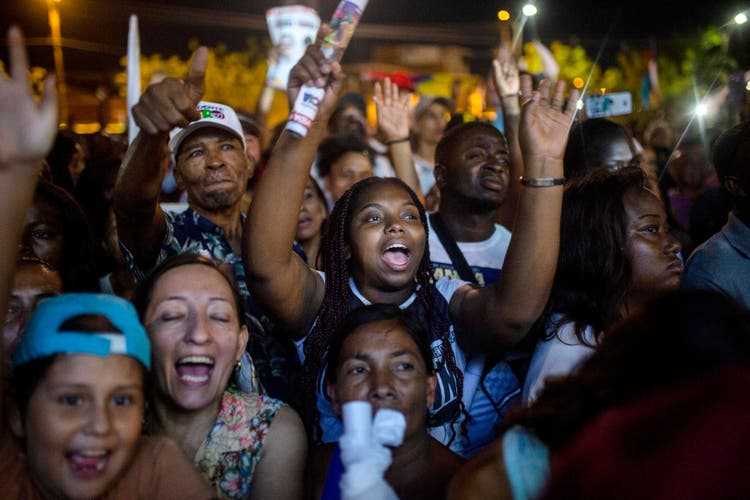
Indigenous peoples from the interior and Afro-Colombians from the Pacific region, fleeing drug gang violence, have been flocking to Cali for decades.
Political outsiders recently won elections
His two most promising opponents are rather conservative: on the one hand there is Federico “Fico” Gutiérrez, the former mayor of Medellín, who has been in second place according to the polls for months. But in the polls of the last few weeks, the little-known right-wing populist Rodolfo Hernández has caught up with a pro-business, anti-corruption course.
Latin America expert Ben Ramsey of investment bank JP Morgan says that recent experience in Andean countries, where political outsiders narrowly won elections (as in Peru) or missed the runoff elections (as in Chile), shows the momentum of a populist climbers should not be underestimated. Especially since, according to the forecasts for a possible runoff election on June 19, all candidates are close to each other. Still, the question is whether a candidate like Petro could capture the anger and dissatisfaction of those who want change in politics.
Since the protests, the “Puerto Resistencia”, a memorial to the protesters, has been standing in Cali. In the east of the city, these three flagpoles have been modeled with cement to form a 15 meter high protest arm. He holds the words “Resiste” (resist) in his clenched fist. The names of the killed protesters are immortalized in graffiti. Metal garbage can lids, which served as shields, hang beside them like discarded weapons.
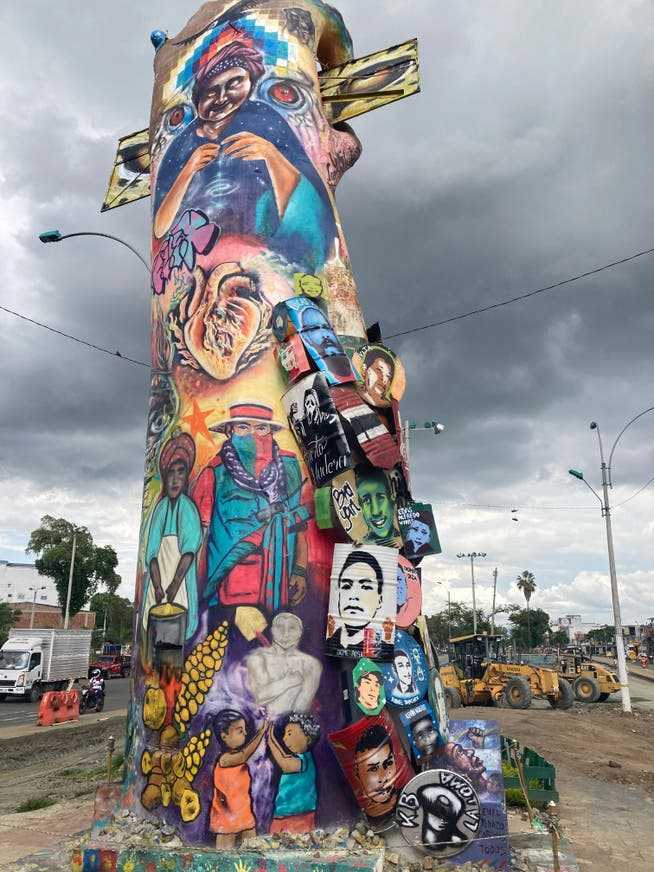
The protesters erected the resistance memorial shortly after last year’s protests in Cali. It is there to this day.
Between two and three dozen young people live there in huts – suspiciously eyed by the officers at a police station on the other side of the street. It smells like marijuana. The mayor promised the squatters that their memorial and huts would not be demolished. Housewives sometimes bring food or clothes. An 18-year-old who calls himself “Zarco” says that most of the people here would like to have jobs or study. He was disappointed by the mayor of Calis because he always claimed to understand the young people: “But then he set the police on us.” He clearly thinks the left-wing candidate Petro is the better choice. “But if our problems remain unresolved, then we will protest again – also against Petro.”
